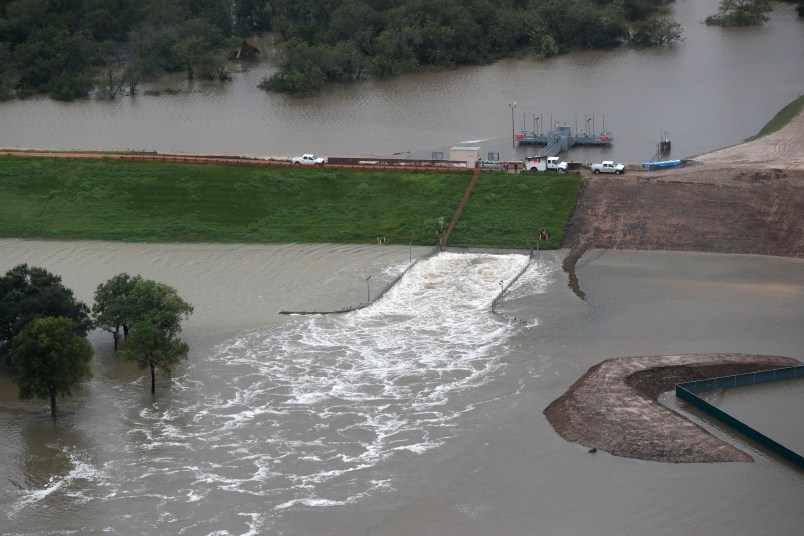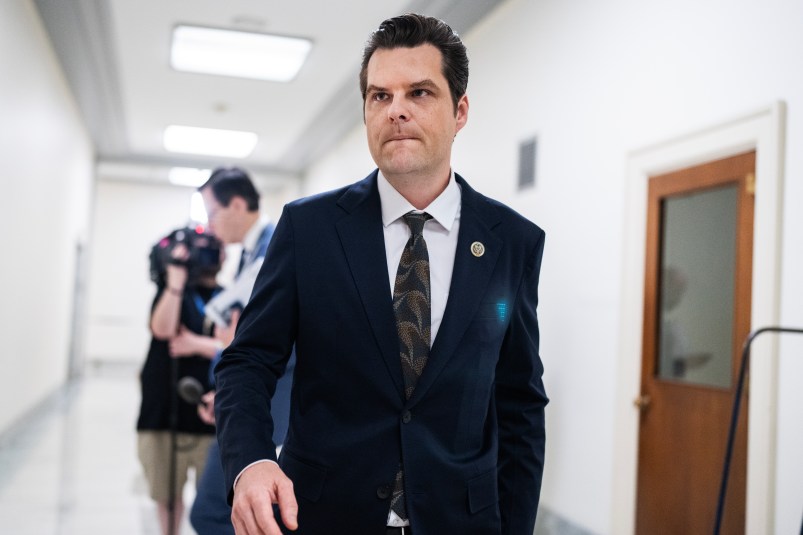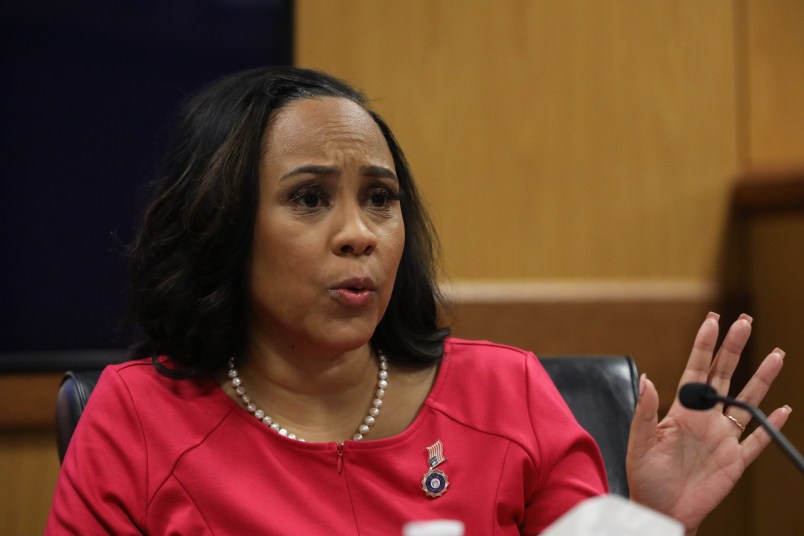HOUSTON (AP) — Houston’s system of bayous and reservoirs was built to drain a tabletop-flat city prone to heavy rains. But its Depression-era design is no match for the stresses brought by explosive development and ever-wetter storms.
Nearly any city would be overwhelmed by the more than 4 feet of rain that Hurricane Harvey has dumped since Friday, but Houston is unique in its regular massive floods and inability to cope with them. This is the third 100-year-or-more type of flood in three years.
Experts blame too many people, too much concrete, insufficient upstream storage, not enough green space for water drainage and, especially, too little regulation.
“Houston is the most flood-prone city in the United States,” said Rice University environmental engineering professor Phil Bedient. “No one is even a close second — not even New Orleans, because at least they have pumps there.”
The entire system is designed to clear out only 12 to 13 inches of rain per 24-hour period, said Jim Blackburn, an environmental law professor at Rice University: “That’s so obsolete it’s just unbelievable.”
Also, Houston’s Harris County has the loosest, least-regulated drainage policy and system in the entire country, Bedient said.
Here’s how the system is supposed to work: The county that encompasses Houston has 2,500 miles of bayous and channels and more than 300 storm-water holding basins, which are designed to fill up during intense downpours and drain slowly as high waters recede.
Water is supposed to flow west to east through bayous, which are tidal creeks that often have concrete improvements to make water flow and are connected to the Galveston Bay.
When big rains come, officials also activate two normally dry reservoirs, closing the floodgates to collect the water and keep it from overwhelming the downtown area.
But the main bayou through downtown Houston, Buffalo Bayou, “is pretty much still a dirt mud channel like you would have seen 100 years ago, just a little cleaned out,” said U.S. Geological Survey hydrologist Jeff East, who is based in Houston.
And because the coastal plain is so flat, only sloping about a foot per mile, the water doesn’t flow out of the bayous fast, Bedient said.
Also, some of the bayous, such as Brays, can only handle 10-year storms, he said. Harris County didn’t leave enough right-of-way space to expand its bayous, Bedient said. And widening projects have been slow and inadequate.
Because of big early 20th-century floods, Houston designed two dry emergency reservoirs that are only activated in heavy rain, Addicks and Barker, both formed by earthen dams. Addicks is 11.7 miles long (18.8 kilometers) with a maximum elevation of nearly 123 feet (37 meters). Barker is 13.6 miles long (22 kilometers) and has a maximum elevation of 114 feet (34 meters).
Normally the floodgates are open and the two areas are dry parkland with sports fields and biking paths. They were essentially dry on Aug. 25, the day Harvey struck, East said. By the middle of the next day, the floodgates were closed and water levels were starting to rise, East said.
Now the reservoirs are overflowing. Officials are being forced to release some of the water pressing against the 70-year-old dams and backing up into wealthy subdivisions. But those releases could worsen the extreme flooding downstream in Houston.
More reservoirs are needed, Blackburn and Bedient said. In fact, another reservoir had been planned for Houston’s western prairies, but development killed that, they said.
Blackburn said studies show those prairies can absorb as much as 11 inches of rain per hour. But he said elected officials allowed subdivision after subdivision to expand outward.
Houston’s storm drain and pipe system is minimal compared with that of other cities and at most can take 1½ inches of rain, Bedient said.
But mostly the problem comes down to helter-skelter development in a county with no zoning, leaving lots of concrete where water doesn’t drain, and little green space to absorb it, Bedient said.
Local politicians are simply unwilling to insist in the local code that developers, who are among their biggest campaign donors, create no adverse effects, said Ed Browne, chairman of the nonprofit Residents Against Flooding.
“In general, developers run this city and whatever developers want they get,” Browne said. His group sued Houston last year in federal court, demanding more holding ponds and better drainage.
There are also more people. Since the previous record flood, inflicted by Tropical Storm Allison in 2001, Houston’s population has grown more than 23 percent, said Sam Brody, a Texas A&M professor in Galveston who studies coastal flooding.
If that’s not bad enough, Houston is getting heavier rains with global warming because warmer air holds more water. Since 1986, extreme downpours — the type measured in double-digit inches — have occurred twice as often as in the previous 30 years, an Associated Press weather data analysis showed in 2016.
Add everything up and “it’s a perfect mix for the perfect storm,” Bedient said. “And that’s why we flood so often.”










This is the story of every major American city. Every.Single.One.
The storm sewer systems were built in the late 19th and early 20th century with little to no upgrades. Add to that a flood quite literally of Biblical proportions.
We are trillions of dollars behind on repairing and rebuilding out cities not even counting roads. Imagine what the sewer systems in the old rust belt cities look like?
I think Houston has also always had a history of a rather egregious lack of urban planning, allowing developers to build in flood-prone areas.
Surprise, surprise…
Here in St Louis, during the great flood of 1993, the levies failed on the Missouri river in the Chesterfield Valley flooding thousand of acres of low lying farmland. There was very little development. http://www.stltoday.com/news/multimedia/the-flooding-of-chesterfield-valley/collection_07ae7f4d-c297-5984-9643-94ac0dcb3bcb.html
Since 1993, the Chesterfield Valley has seen many billions of dollars of development of strip malls, 2 outlet malls, restaurants, and subdivisions.
It’s the hubris of our age and while Houston is very guilty, I don’t think many areas are not just a foolish. Every time I drive thru the Chesterfield Valley I remember seeing it full of water and think of the day I see it again full of water.
Tropical Storm Allison, in June of 2001, dropped 40" of rain on Houston over 10+ days, leaving 30,000 homeless, 70,000 homes flooded and 3500 destroyed. 41 people died (23 in Houston proper). Harvey is basically a repeat of Allison, with a few more inches of rain. Except that now, Houston has 23% more people, much more development over a larger area, and no meaningful improvements to flood prevention infrastructure in the past 16 years. Believe or not, Houstonians are proud of their short-sightedness.